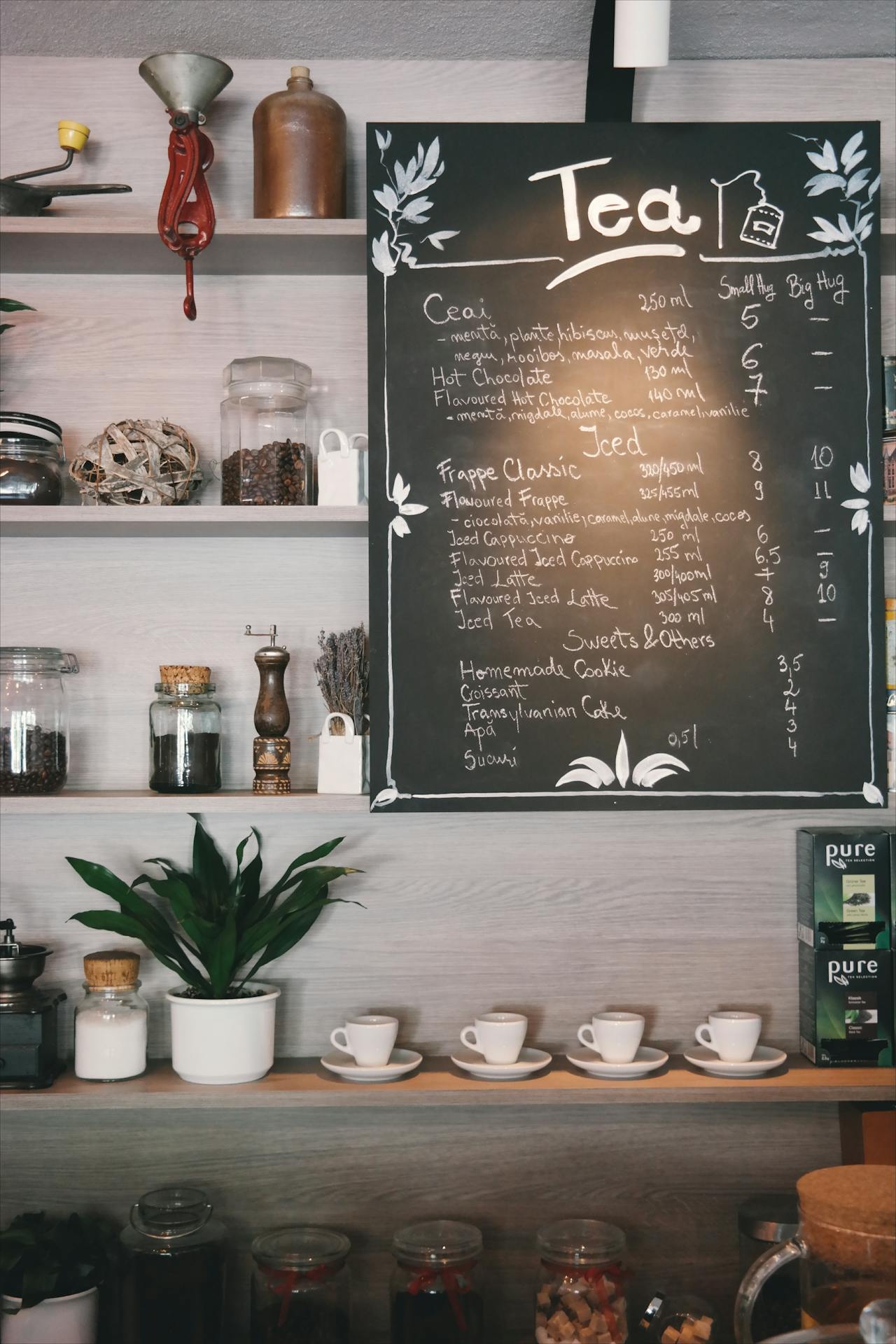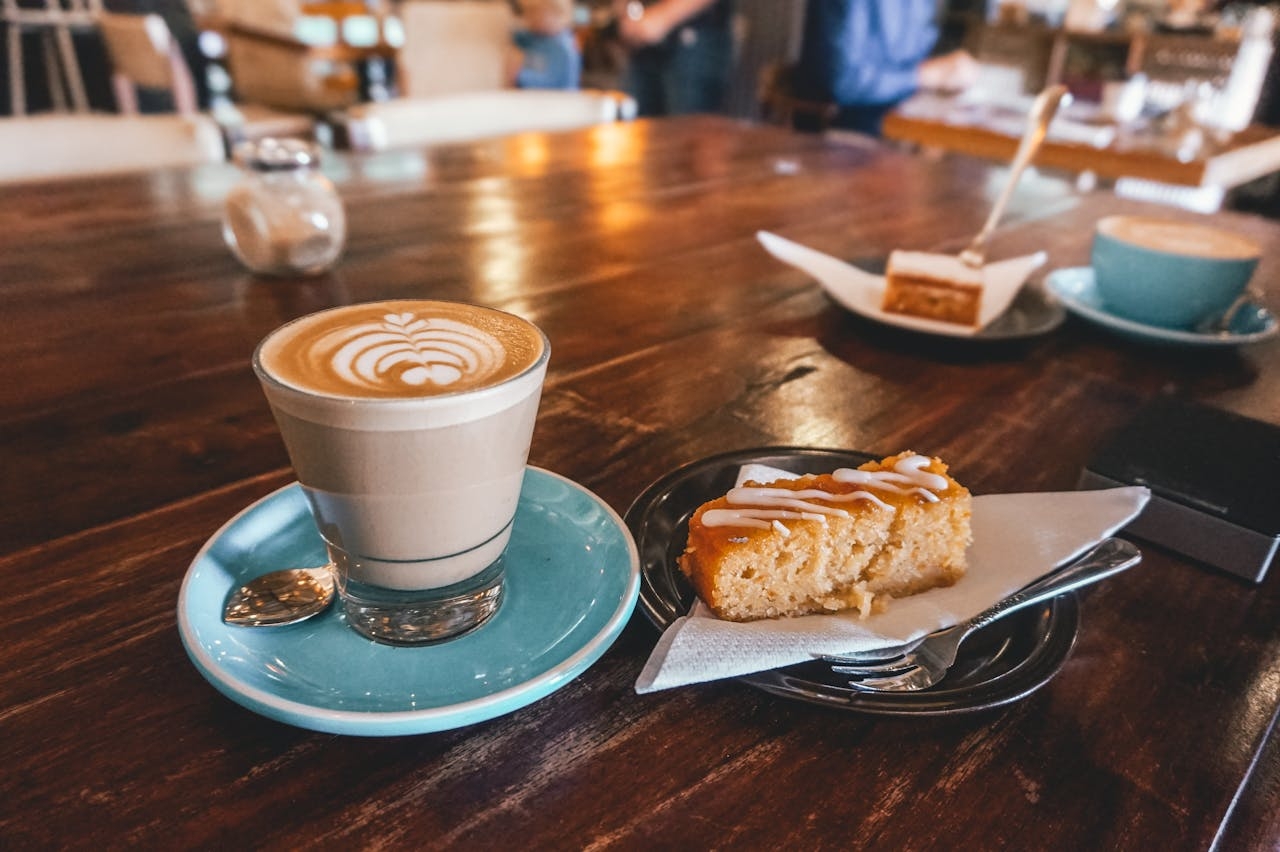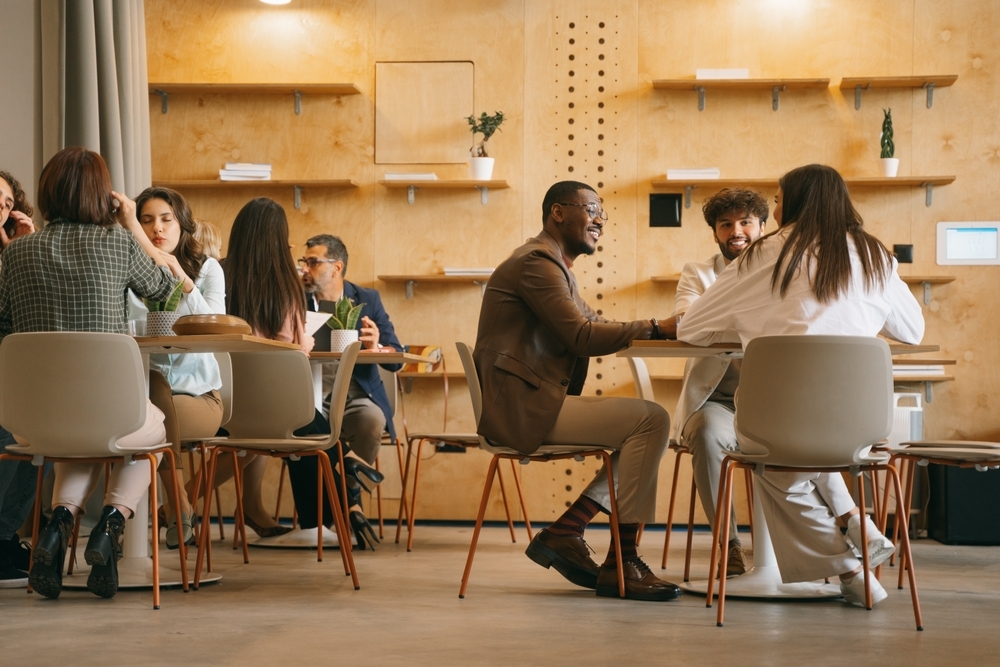Exploring the Charm: What Is a Cafe?
By Hamza Benhlima · 7. March 2024
What defines a cafe?
In essence, it’s an establishment dedicated to coffee and companionship, providing an array of beverages and an inviting environment.
This article invites you to explore the ways in which cafes function as modern social hubs and symbols of cultural expression.
Key Takeaways
- Cafes are cosy hubs combining an array of coffee drinks with snacks and meals, offering a social, relaxed atmosphere for every part of the day.
- The history of cafes is closely connected to our shared love for coffee and the need for gathering places over the years.
- Cafes stay relevant by mixing traditional with modern trends, embracing everything from cold brew to coworking spaces—redefining the coffee experience.
The Essence of a Cafe

cafe users
So, what is a cafe? A cafe, or café as the French would say, is more than just a small restaurant. It’s a haven for coffee enthusiasts, a sanctuary where the humble coffee bean reigns supreme.
From your classic espresso to aromatic cappuccinos, the world of coffee drinks is at your fingertips in a cafe. But that’s not all.
Alongside coffee, many cafes also serve tea🍵 and a variety of non-coffee beverages like smoothies and juices, adding a splash of colour and flavour to their menu.
Step into a local cafe and you’ll likely find a variety of seating options designed to create a welcoming atmosphere.
Whether you prefer to perch on a bar stool, sink into a comfy couch, or gather around a table, there’s a spot for you.
The service in cafes is attentive and relaxed, highlighting the establishment’s dedication to hospitality and ensuring a pleasant experience for guests.
While cafes are renowned for their coffee, they also offer a delightful selection of food. You can expect everything from light bites and snacks🥯 to full meals.
Here’s a taste of what’s on offer:
- Freshly-baked croissants
- Creamy cappuccinos
- Frothy lattes
- Satisfying sandwiches and more
Whether you’re in need of a caffeine boost, a cool iced tea, or a cosy corner to relax, cafes are equipped to offer a blend of comfort, quality, and affordability.
The Birthplace of Cafes
You may wonder about the historical roots of the beloved cafe. The first cafe is said to have opened its doors in 1550 in Constantinople, under the rule of the Ottoman Empire.
These early establishments, called coffeehouses, were places where patrons could sip on their coffee and engage in conversation.
The term café, meaning a coffee house, was borrowed from the French, who in turn borrowed it from the Turkish word ‘kahve’.
Coffee made its way to Europe thanks to Venetian merchants who traded with North Africa and the diligent work of the Dutch, who spread the coffee plant around the world, including to India and Asia.
The first European coffee houses appeared around 1645 in Italy and rapidly spread throughout the continent, with Vienna opening its first coffee shop in 1683.
Meanwhile, in England, coffee shops became popular centres for news, discussion, and business transactions.
The late 20th century marked a notable evolution in cafe culture with the rise of espresso and specialty coffees globally, leading to the establishment of venues focused on high-quality coffee experiences.
The 1990s and early 2000s brought about another change with the advent of Internet cafes, highlighting the dynamic nature of cafes as they adapt to societal shifts.
Unwrapping the Menu: From Espresso to Pastries
 cafe menu
cafe menu
A local cafe offers a core coffee selection that includes standard drinks like black coffee, brewed using various methods, and espresso-based beverages such as lattes, cappuccinos, and cold brews.
These drinks are prepared with careful attention to the source and presentation of the coffee.
Specialty items such as mochas, a delightful blend of coffee and chocolate, and sweet and foamy frappes topped with whipped cream are also on offer.
In response to evolving customer tastes, cafes include superfood lattes like turmeric and matcha on their menus.
Of course, no visit to a cafe is complete without exploring its bakery and pastry section. Whether you’re in the mood for breakfast or lunch, a snack, or dessert, there’s something for you. Some options include:
- Croissants
- Scones
- Danishes
For those with a heartier appetite, the menu also includes a variety of filling options such as flavorful sandwiches, pasta dishes, soups, and crisp, fresh salads.
A Day in the Life of a Café: When Do People Visit?
Cafes are frequented throughout the day, popular for not just breakfast🍳, but also lunch and dinner.
This flexibility makes them a go-to dining option for many.
The busiest times at a cafe are typically the morning rush hours from early to mid-morning, lunchtime around noon to early afternoon, and the early evening.
These peaks are driven by office workers stopping by for their morning caffeine fix, food orders accompanying coffee during lunchtime, and individuals seeking a place to unwind or a caffeine kick after work.
But that’s not all. Cafes also see traffic during:
- mid-morning and afternoon leisure visits, loved by office workers, students, and those desiring a social space
- the late morning crowd, with a brunch menu featuring items like mimosas and eggs Benedict
- various times of the day, with to-go specialty items such as wraps and hearty salads catering to customers seeking quality cafe fare on the move.
The Ambiance of Cafes: More Than Just a Place to Eat
A cafe serves as more than just an eatery; it offers a home-like feeling. The ambiance of a cafe is typically cosy and relaxed, conducive to patrons engaging in conversation or unwinding with a book.
The design elements, from the colour palette to the lighting, evoke comfort and set a comfortable mood.
Cafes prioritise exterior and interior design elements to enhance the customer experience.
Some key design elements include:
- Welcoming layouts
- Inviting entry points
- Focal features
- Varied seating options
All of these elements work together to create Instagram-worthy environments that attracts potential customers.
But cafes aren’t just about looks. They’re about fostering community engagement by hosting events, featuring local artists, and creating spaces where patrons can partake in cultural activities.
Distinctive thematic experiences, from unique selling points to sensory offerings, cater to an array of preferences and contribute to the cafes’ uniqueness, ultimately positioning cafes as important social hubs within their communities.
Specialty Drinks and Trends in Modern Cafes
 cafe drink + pastry
cafe drink + pastry
Modern cafes adapt to innovations and follow current trends.
For example, they’re gaining popularity for innovative brewing methods, which offer distinct flavours and strengths to cater to diverse coffee enthusiasts.
Cold brew, nitro coffees, and other coffee based beverages have also emerged as trendy alternatives, providing a novel coffee experience with smoother and more nuanced flavours.
Cafes are increasingly incorporating technology like digital menus, app-controlled coffee machines, and contactless payment systems to streamline operations and personalise the customer experience.
Cafes are offering a variety of options to cater to health-conscious customers and various dietary needs. Some of these options include:
- Organic teas
- Chai teas
- Matcha teas
- Vegetarian milk alternatives like soy, oat, and almond
In addition, cafes are also experimenting with international coffee brewing techniques and creating their own unique house blends to keep their menus fresh and exciting.
The Evolution of Cafes Into Co-Working Spaces
 cafe co-working space
cafe co-working space
Cafes have significantly evolved from their humble beginnings as coffeehouses.
Today, they’re spaces for:
- freelancers
- remote employees
- students
- entrepreneurs
The rise of owner operated small businesses has allowed people to work and socialise, paving the way for modern cafes to incorporate coworking elements.
Modern cafes have started to integrate co-working space features such as ergonomic furniture, high-speed internet, and conference rooms to cater to business professionals.
The emergence of coworking spaces reflects a cultural shift towards valuing flexibility, collaboration, and work-life balance, influencing cafe environments.
Adapting to the needs of students and mobile professionals, modern cafes offer amenities like Wi-Fi, creating conducive environments for work and study.
Whether you’re working on a business proposal or studying for an exam, a cafe can be your ideal workspace.
Summary
Cafes are more than just places to drink coffee☕️. They’re establishments steeped in history, offering diverse menu options, fostering social interaction, and serving as co-working spaces.
Whether you’re a coffee connoisseur, a remote worker, or simply someone looking for a cosy spot to unwind, a cafe has something for you.
Frequently Asked Questions
What makes a cafe a cafe?
A café is a type of restaurant that serves coffee, tea, and light refreshments like pastries, sandwiches, and snacks. It’s all about the cosy vibe with good coffee and treats – the word itself comes from the French word meaning “coffee.” So, now you know the secret ingredients for a café!
How do you describe a cafe?
Cafes are cosy spots where you can relax with good food and drinks, providing a social atmosphere and a place to unwind with friends. They offer various coffee options, refreshments and light meals in a laid-back setting. So, whether you’re looking for a caffeine fix or a spot to catch up with friends, a cafe is the place to be!
What is the difference between a cafe and a coffee shop?
The key difference is that a cafe offers a wider range of food and drink options, as well as a more laid-back vibe for catching up with friends over a cup of coffee. So, think of a cafe as your go-to spot for a leisurely hangout with some tasty treats.
Where did the first cafe originate?
The first cafe is said to have opened in 1550 in Constantinople, present-day Istanbul, so you can thank the Ottoman Empire for your daily caffeine fix!
What types of food and drinks can I find in a cafe?
In a cafe, you can find a variety of coffee drinks, teas, pastries, and savoury dishes, often featuring local flavours and ingredients. So, expect a delicious spread for your taste buds!

